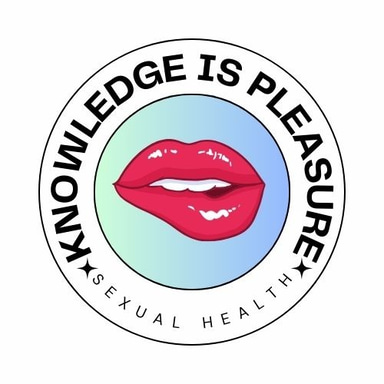Smut is good. And good for you!
We explore the overlooked therapeutic value of writing erotica. Blending personal experience with clinical insight, this article argues that erotica, often dismissed as trashy or taboo, can be a powerful form of narrative therapy. By giving voice to fantasies, fears, and desires on the page, people can safely explore, reframe, and even heal their sexual stories.
5/8/20244 min read


“Open your mouth,” he directed, the voice deep and smooth.
The precipice; the pause just before the drop.
At this point, I didn’t need to be told twice.
No sooner had my lips parted than his fingers entwined in my hair, pulling me forward just as he thrust directly into my throat.
There was no turning back for me now.
I write erotica or, what the internet lovingly refers to as smut. It's a nice little side gig and I do it for fun, but I also write because a lot of my sexual needs will never be met in real life. This is due to either the laws of physics or the laws of man. So I live and love vicariously through the characters I bring to life on my computer screen.
As a sex therapist and clinical sexologist, I encounter a good number of issues people have with sex on a daily basis.
They want more sex but their partner doesn’t.
They want less sex (or none) but they also don’t want to disappoint their partner.
They have been having sex their whole life and suddenly realized they have no idea what actually turns them on.
Sex hurts and they don’t want it to.
They’ve discovered they are masochists and want their partner to hurt them but their partner now looks at them like they are insane.
Past trauma, be it religious, physical, or emotional, gets in the way of intimacy.
And so, so much more.
As therapists, we learn about numerous clinical interventions to help with these very valid complaints. Cognitive behavioral therapy, Acceptance & Commitment Therapy, Cognitive Processing Therapy, EMDR. This list, too, can go on and on and on.
But among these formal approaches, there is also something less clinical and often overlooked: storytelling itself. Writing erotica can function as a form of narrative therapy. It allows people to give shape and voice to the fantasies, fears, desires, and limits that may be too tangled or taboo to speak aloud. For many, putting these stories onto the page is not only creative play but also a powerful way to explore sexuality safely, reclaim agency, and expand what is possible in their sexual narratives.
For those who may not be familiar with narrative therapy, it is an intervention that views people as separate from their problems and emphasizes the power of the stories they tell about themselves. It was developed in the 1980s by Michael White, an Australian social worker, and David Epston, a New Zealand therapist, and was deeply influenced by White’s collaborations with Aboriginal communities in Australia. He saw the importance of respecting people’s lived experiences and cultural traditions, rather than imposing dominant Western psychological models.
If we accept that the stories we tell about our lives are shaped by culture, history, and power, then we also need to realize that these stories can either limit or liberate us. Narrative therapy invites people to “re-author” their lives by externalizing unhelpful, problem-saturated stories and exploring alternative narratives that reflect their strengths, values, and hopes instead. In practice, this means helping clients see themselves as experts in their own lives, in this case their sexual lives, and supporting them in constructing new, more empowering ways of understanding their experiences.
Now, erotica is often dismissed as filthy and unrefined, despite the literary and financial successes of numerous authors over the past…100 years? Which tells me that people want it, they just don’t want anyone else to know they want it. So they laugh about it and say, “I would never!” to their friends and family in public, only to turn around in eager anticipation for the next Sarah Maas or Kathryn Moon book to be released.
So if we can consume the delicious brain candy written by others, why not take a stab at writing a little of it for ourselves? Not for publication, mind you, but just to get out the fears and worry that pepper the sexual narrative that exists now. Giving those anxieties and experiences to a fictional character and being able to direct the resolution on paper and thereby, one can hope, illuminating a path forward for yourself. If you can figure out a solution, come to an understanding, vanquish the big bad villain in a story, then it might become a just a little more accessible for you to accomplish in real life.
And who knows? Maybe you get so good at it, you share it with others. And then others see your narrative and it validates their own experiences.
In the end, smut isn’t just about titillation (though that’s certainly part of the fun). It’s about permission. Permission to imagine, to want, to question, to heal. Whether you’re writing it for yourself or reading someone else’s words, you’re practicing curiosity and compassion toward your own desires. You’re telling yourself it’s okay to want more, less, different, or even impossible things. And that’s not shameful. It’s profoundly human.
So go ahead. Write the filth. Make it tender. Make it wild. But make it yours. Because only the story you tell about your sexuality can be one that finally feels true.
The Musing Minx is a licensed social worker, AASECT certified sex therapist and clinical sexologist certified through the American Board of Sexology. She advocates for comprehensive sex education, sexual empowerment, and removing the social and legal stigma attached to BDSM and kink practices between consenting adults through her organization Knowledge is Pleasure, all in hopes of converting others to the cause!


